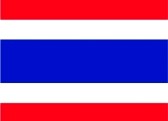All Categories



Gampopa's Mahamudra: The Five Part Mahamudra of the Kagyus
Share Tweet
*Price and Stocks may change without prior notice
*Packaging of actual item may differ from photo shown
- Electrical items MAY be 110 volts.
- 7 Day Return Policy
- All products are genuine and original
- Cash On Delivery/Cash Upon Pickup Available








Gampopa's Mahamudra: The Five Part Mahamudra of the Features
-
New
-
Mint Condition
-
Dispatch same day for order received before 12 noon
-
Guaranteed packaging
-
No quibbles returns
About Gampopa's Mahamudra: The Five Part Mahamudra Of The
"Five-Part Mahamudra" is a specific way of practising Mahamudra that is used in the Kagyu lineage of Tibetan Buddhism. It was first taught by Gampopa to his disciple Phagmo Drupa more than nine centuries go and since then has become one of the main ways that Mahamudra is transmitted and practised in the Kagyu lineage. This book presents the teaching and system of instruction that goes with it through actual Tibetan sources and culminates in a modern-day oral commentary given by one of the contemporary masters of the tradition. The sources consist of six texts by various masters of the tradition, texts that were written during the nine-hundred year period since the teaching was first given by Gampopa. Through the texts, the reader not only gets to see all of the details of the Five-Part Mahamudra practice, but also gets to see the writings of the masters of various Kagyu lineages--Karma Kagyu, Drukpa Kagyu, Drigung Kagyu, and Throphu Kagyu. The reader also gets to see their different styles of presentation as the styles changed through the centuries. A long introduction that informs the reader of the details of each of these authors and their styles of presentation is included. The book finishes with a long oral commentary by one of today's great Karma Kagyu masters, Bengchen Tenga Rinpoche. The book is unique in the way that it presents all the details of Mahamudra practice, with nothing left out or hidden from view, as presented by the very greatest of authors of the Tibetan tradition over many centuries.



























